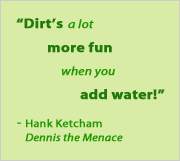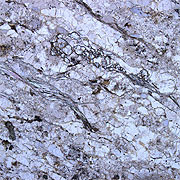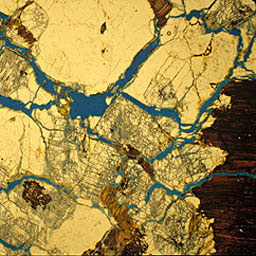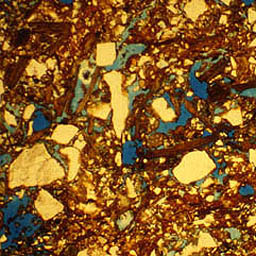

Soils “inherit” minerals as “parent” rocks weather, or break down, into particles.
The types and proportions of mineral particles present in a soil affect its color and texture.
Ninety-eight percent of the Earth’s crust is made of just eight elements—oxygen, silicon, aluminum, iron, calcium, sodium, potassium, and magnesium. Minerals are combinations of these (and other) elements. Rocks are hardened mixtures of minerals.

- Parent rock magnified
100 times - Edward Vicenzi, Smithsonian Institution

- Rotten rock magnified
50 times - Rotten rocks begin to form secondary minerals, such as silicate clay and iron oxide, when primary minerals dissolve and re-form as new particles.
- Robert C. Graham, University of California, Riverside

- Soil magnified 50 times
- Robert C. Graham, University of California, Riverside
|
|
|

